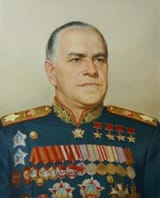Search Results
6/25/2025, 9:14:40 AM
>>508667164
>What actually happened?
>1. Stalin was initially stunned and withdrew briefly — but did not flee permanently
Upon hearing the full extent of the German invasion, Stalin was reportedly shaken and retreated to his Dacha in Kuntsevo (near Moscow) for several days.
>For about 2–3 days, Stalin was minimally active and did not appear in public. Some sources suggest he feared he might be overthrown.
>June 29–30, Stalin reportedly refused contact with Politburo members, leading Molotov, Beria, and others to visit him at his dacha and persuade him to return to leadership.
>“Ilyia Ehrenburg and others later claimed Stalin was terrified, thinking the Politburo had come to arrest him.” — Dmitri Volkogonov, “Stalin: Triumph and Tragedy”
>2. He returned and took command
On July 1, 1941, Stalin resumed full control and established the State Defense Committee (GKO), placing himself as Commander-in-Chief of the Soviet armed forces.
>He appointed Marshal Georgy Zhukov as Chief of the General Staff (replacing General Meretskov), and Zhukov took the lead on organizing counterattacks and evacuations.
>3. Claims of 10 days of work and 2 days off
This version is partly accurate but likely exaggerated. Stalin did work intensively after recovering from the initial shock — meeting with military advisors, reorganizing leadership, and preparing defenses.
>However, the idea that he worked 10 straight days and then took 2 days off is more of a summary of his work habits, not a timeline of his activity after Barbarossa began.
Wrong
He took 9 days off since June 22nd (okay not two weeks) because of his immense shock and took over again on July 1st.
Kneel.
>What actually happened?
>1. Stalin was initially stunned and withdrew briefly — but did not flee permanently
Upon hearing the full extent of the German invasion, Stalin was reportedly shaken and retreated to his Dacha in Kuntsevo (near Moscow) for several days.
>For about 2–3 days, Stalin was minimally active and did not appear in public. Some sources suggest he feared he might be overthrown.
>June 29–30, Stalin reportedly refused contact with Politburo members, leading Molotov, Beria, and others to visit him at his dacha and persuade him to return to leadership.
>“Ilyia Ehrenburg and others later claimed Stalin was terrified, thinking the Politburo had come to arrest him.” — Dmitri Volkogonov, “Stalin: Triumph and Tragedy”
>2. He returned and took command
On July 1, 1941, Stalin resumed full control and established the State Defense Committee (GKO), placing himself as Commander-in-Chief of the Soviet armed forces.
>He appointed Marshal Georgy Zhukov as Chief of the General Staff (replacing General Meretskov), and Zhukov took the lead on organizing counterattacks and evacuations.
>3. Claims of 10 days of work and 2 days off
This version is partly accurate but likely exaggerated. Stalin did work intensively after recovering from the initial shock — meeting with military advisors, reorganizing leadership, and preparing defenses.
>However, the idea that he worked 10 straight days and then took 2 days off is more of a summary of his work habits, not a timeline of his activity after Barbarossa began.
Wrong
He took 9 days off since June 22nd (okay not two weeks) because of his immense shock and took over again on July 1st.
Kneel.
Page 1
